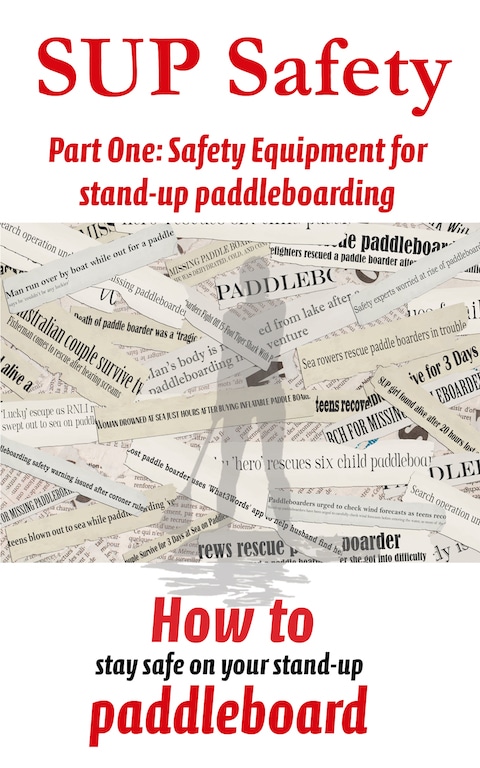
The SUPboarder Team recently sat down and chatted with New Zealand stand up paddleboarding national safety officer Bill Dawes, who older paddlers may remember as the editor of BOARDS windsurfing magazine in the UK, back in the nineties and noughties. We talked about everything SUP safety and Bill’s recent books on the subject, which we all agree every paddleboarder should read. Over to Bill, to explain more about his books and why he’s so passionate about the safety of SUPers around the world...
SUP is essentially a very safe sport. The odds of enjoying a SUP session without mishap are way higher than most other popular recreational activities like mountain biking, or even just going for a run. Yet it’s not entirely risk free. People do get into trouble. Indeed, every year, people die while paddleboarding. This shouldn’t happen. Recreational flat water paddleboarding isn’t an activity where you set off wondering whether you’ll make it home that night. We’re not free-climbing or wingsuit flying or riding 50’ monster surf at Nazare. Paddleboarding does not seem dangerous. And therein lies the problem. All too many people go paddleboarding with no consideration of safety at all. Or their safety preparation consists of packing a buoyancy aid and perhaps a few bits and pieces of other safety-related stuff onto their board, and assuming that’s safety taken care of. As a result, accidents happen. And they pretty much all have one thing in common.
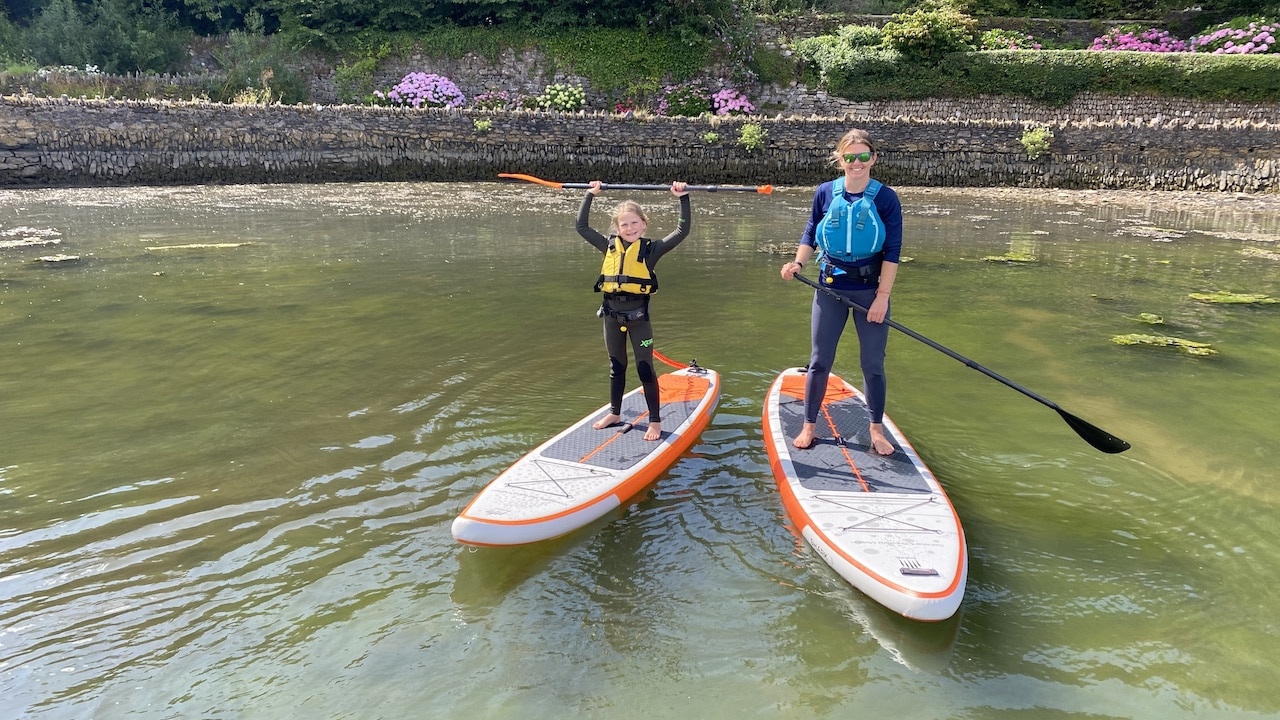
Ten years of studying why paddleboarders get into trouble; talking with survivors, reading accident reports, working with coroners’ inquests (which really brings it home!), comparing notes with safety experts in other watersports, participating in government investigations into paddleboard safety and running goodness knows how many safety courses, training sessions and seminars, has made me rethink almost everything I originally thought I knew about SUP safety. Over this time I’ve ended up pretty much completely changing my opinion of what actually matters in staying safe.
What it comes down to is knowledge. However good you may think you are, you can almost certainly still improve your chances of not ever becoming an accident/rescue/fatality statistic by increasing your knowledge. With the right knowledge, you can push those odds of coming home safely from your SUP session to damn near 100%.
So a few years ago I decided to try and get all the knowledge into one place, and create the complete manual of how to be safe on your SUP. It turned out to be a far bigger project than I anticipated, and as it came together, gave me yet further insight into how safety actually ‘works’. I started to see patterns, consistencies and fundamentals that have enabled me to think about and teach SUP safety in a completely – and undoubtedly far more powerful and effective – way.
The book has now been split into three volumes, to make the information more accessible.
Book 1 is about safety equipment. All too many people assume that having the right safety equipment is 90% of being safe, but that’s far from true. Safety equipment doesn’t in itself reduce the odds of you experiencing a problem – indeed it may well increase them. As well as having the right equipment you need the right knowledge to go with it. So that’s what this book is all about.

Book 2 is about understanding your environment, which is a massive yet vastly underrated cornerstone of SUP safety. The vast majority of SUP incidents that end in rescues or fatalities could have been avoided, with better knowledge and understanding of the environment. The best emergency scenario is the one that never even happened, because you saw it coming with enough time to take the necessary actions to get yourself out of danger. If all paddleboarders learned how to do this, then the vast majority of recorded incidents would never even have happened. Yet this whole topic of understanding and learning how to read the environment that we paddle in gets very little attention in the SUP media. Indeed, in 10 years of monitoring and contributing to SUP facebook groups, I don’t think I can ever recall seeing anyone ask ‘what indicators should I be looking out for that the conditions may be changing when I am out on the water, and which ones should I treat as potentially dangerous?‘. Or ‘how do I properly interpret the weather forecast and get the information I need from it to determine where to go paddling, or whether it is indeed safe to go paddling?‘. Or ‘how can I tell if I am in a strong current?‘ So I’ve ended up devoting a whole book to exploring all this in great detail. Because with this knowledge, you’re far less likely to get caught out.
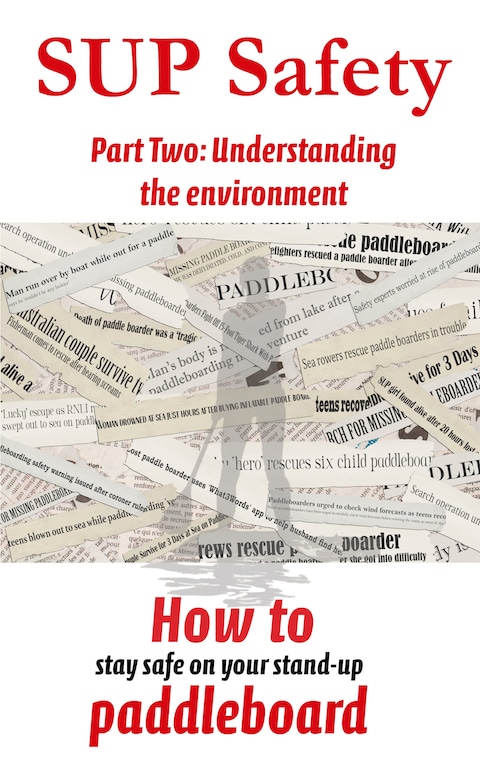
Book 3 focuses on what to do when things go wrong. Again, this is something that nobody really thinks about. But actually, just a little bit of time spent considering this will pay huge dividends should you find yourself in the middle of a stressful situation. Just consider; when did you last think about what you would actually do (and I’m talking about the full sequence of events), if you (or a friend):
- Were unexpectedly taken ill while on the water?
- Experienced a full structural failure of your iSUP while you’re out paddling?
- Needed to deploy your beltpack PFD but it won’t auto inflate?
- Suddenly found yourself in unexpected fast flowing water?
- Lost your fin, at a considerable distance from shore?
- Experienced an equipment malfunction?
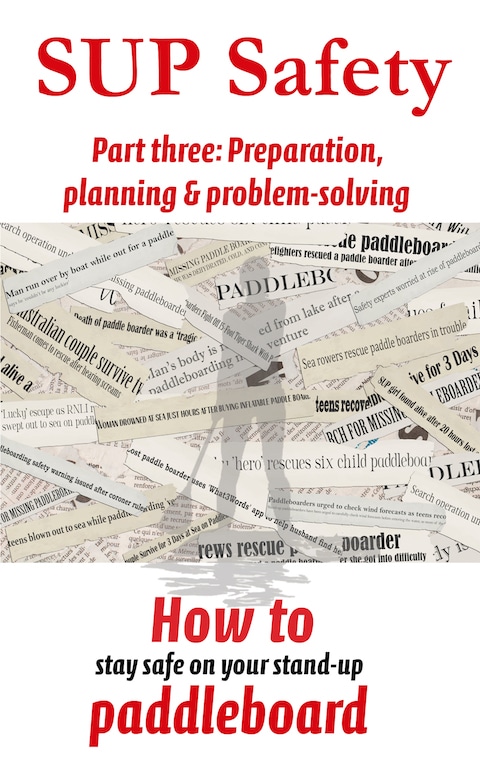
All these things can and do happen, and I’ve spent time with the survivors. Many of whom were very experienced paddlers, but still weren’t even remotely prepared for what happened to them, and had to endure a lengthy and traumatic rescue experience as a result. If you’ve thought about how you’d deal with an emergency situation before it arises, you’ll cope so much better. Even the most serious situation becomes infinitely easier to manage if you already have a plan.
The books feature case studies, practice scenarios and are designed to be either read from cover to cover or dipped into as and when. Whether you’re new to paddleboarding, or you’ve been on the water all your life, there’s always more to learn. It was certainly a huge learning experience for me; it actually came as a horrible shock to discover just how much I didn’t know! We all have gaps in our knowledge, particularly when you travel to new places to paddle, where the environment may well be very different.
The bottom line is that being safe is all about knowledge. And the books are about sharing that knowledge; they’re the sum of everything I’ve learned. They’re on Amazon as print or ebooks, at the price it costs to print them, the ebooks are less than the price of a cup of coffee. Writing them was never a money making project. The two years of my life it has taken to write them will have been well spent if the books save just one life.







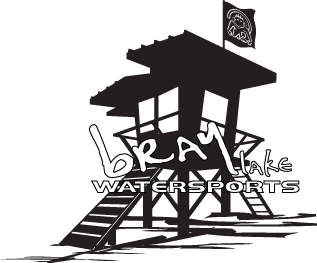


That’s great, just what I’ve been looking for. You’re right that no-one really talks about how to read the water or what you do if the iSUP has a severe structural failure out at sea. I recently bought an inflatable sail to use with the SUP but have been asking myself ‘what if I go far out to sea with it and the SUP has a slow leak that I didn’t notice, and I’m stranded a long way from shore?’ I’ve not beenb able to answe this question but glad to finally find som,eone else asking it, so I will… Read more »
Hey Sonny.Yes these books are pack with really good info. And as Bill is just trying to get the SUP safe message out there the price is very low.
Also if you want to see or share some more visual SUPsafe videos check out theses too https://supboardermag.com/supsafe/ . Happy and safe paddling Reuben